
The original Hyrule Warriors was a Dynasty Warriors game with The Legend of Zelda paint. Thankfully, the Zelda flavor elevated the Musou-style gameplay, due to the storied legacy that came with it. As it turns out, adding a bit of Zelda to something can make it more interesting.
Hyrule Warriors was a grab bag of Zelda icons and characters from through out the series. It was not dedicated to telling a specific story based on any singular era, but rather was like a clashing of worlds that did not commit to anything.
Hyrule Warriors: Age of Calamity refines much of what made the first game appealing, and also targets a specific Zelda timeline to expand upon. It becomes more focused on telling a story set in The Legend of Zelda: Breath of the Wild‘s Hyrule, rather than just being broad fan service to every single character ever featured in any Zelda game.
Hyrule Warriors: Age of Calamity
Developer: Koei Tecmo
Publisher: Nintendo
Platforms: Nintendo Switch
Release Date: November 20, 2020
Players: 1-2
Price: $59.99
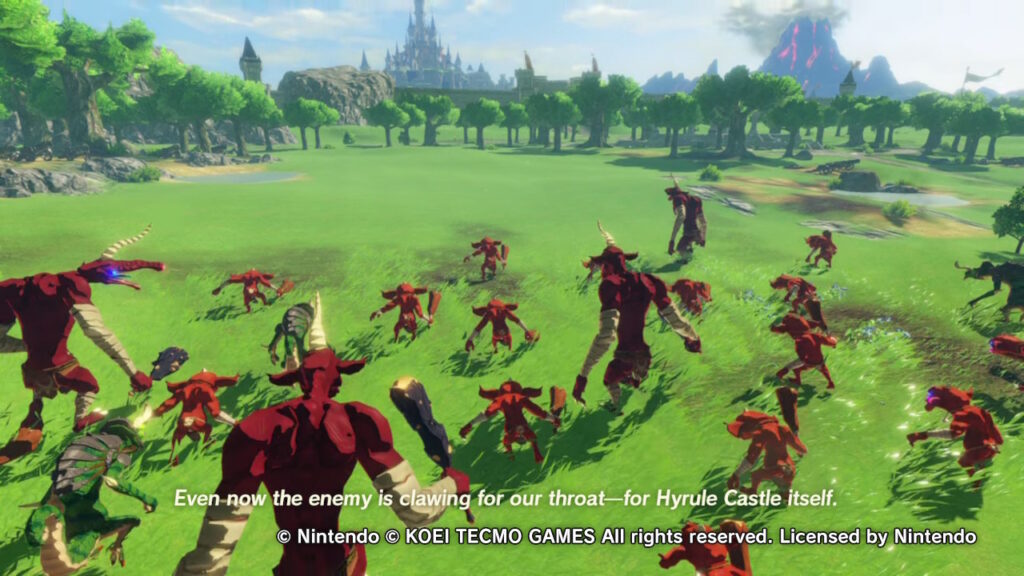
Anyone who has played Breath of the Wild is aware that the setting depicts Hyrule under the rule of the entity known as Calamity Ganon. The big bad had effectively won, and Link awakens after being put in stasis and sets out to defeat him in a wide open world adventure.
Age of Calamity depicts the epic clashing of forces commanded by good and evil that would lead to the inevitable dominion of the kingdom. At least, that is how the game had been marketed. Age of Calamity is not actually the prequel to Breath of the Wild at all, and this is made apparent very early on.
The Zelda series is no stranger to split-timelines, as seen in the games connected to Ocarina of Time. Age of Calamity makes it definitively obvious that Breath of the Wild also ascribes to having a split timeline, and it is due to a time traveling droid that goes back from the era when Calamity Ganon reigns supreme.
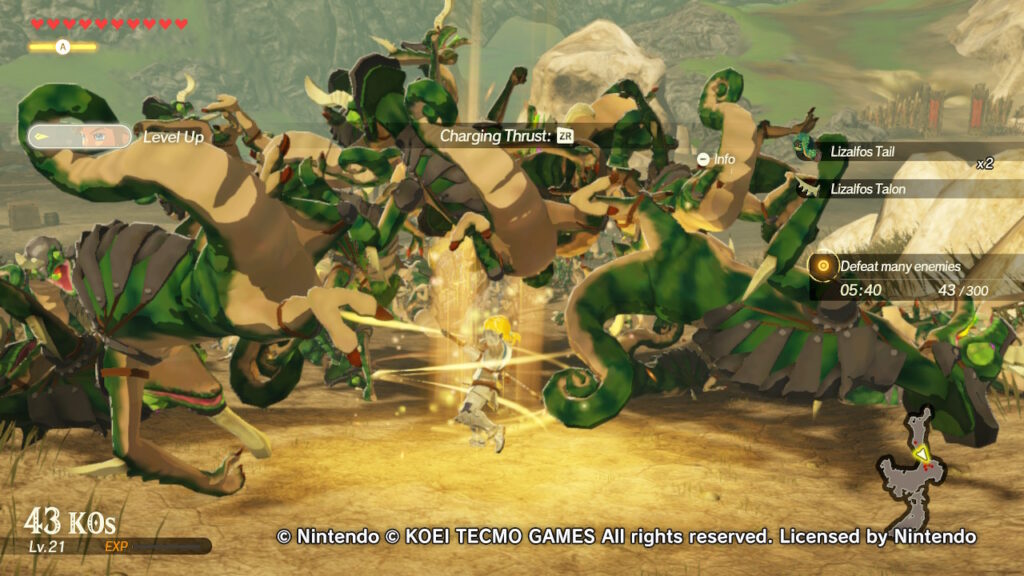
Zelda is more developed in Age of Calamity than she has ever been in any game before it. The entire story revolves around her, her awakening abilities, and how she grows into the role of leader for the four champions to battle Ganon.
She develops from a timid researcher who depends on Link to do her dirty work, into a determined and confident commander. This is further represented in her gameplay where she is terribly clunky on the field and has short combos, but becomes one of the most devastating units when her potential is fully realized.
The champions of Hyrule wage a war with the Yiga Clan, who have conspired with a mysterious seer named Astor who becomes the inevitable cause of the calamity known as Ganon. Astor is as broad as it gets when it comes to obviously evil villains. There is so little known about him, and his design exudes classic evil wizard.
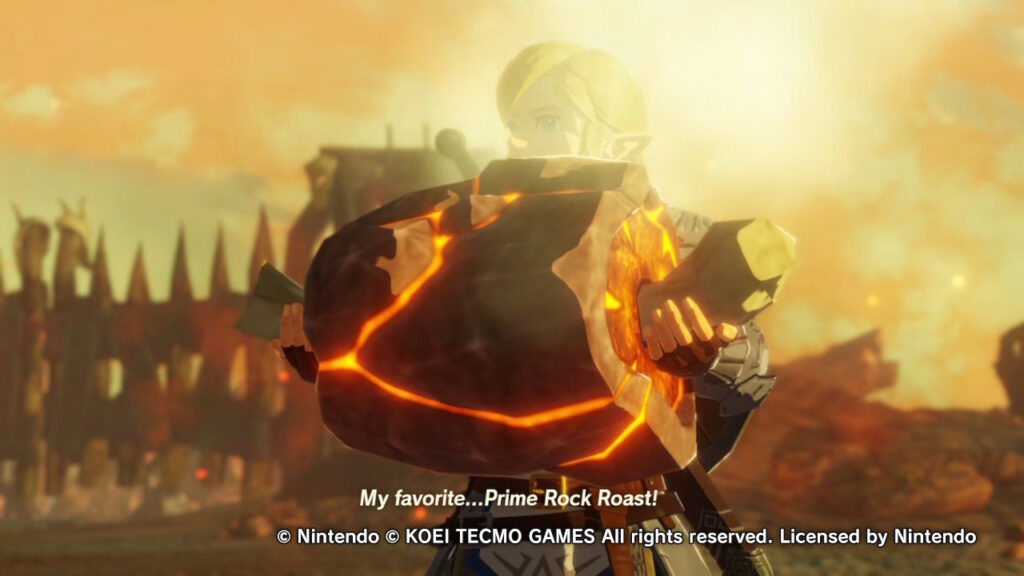
It is unusual to experience a Zelda game that has a huge amount of effort into telling its story. Cutscenes are well directed, and every character has a purpose for every scene. Each of the players in the story has a defined personality, and it is enjoyable to see how they play off each other.
Daruk, the Goron Champion, is a boisterous great sword wielder with a Hulk Hogan cadence to his speech. He is a wonderfully spirited and fatherly type guy and is fun to be around. Revali the bird guy is an arrogant archer who can expand his move set when he is air-born. As smug as he is, he ultimately proves he has a heart of gold.
Bringing voice acting to Zelda has proven to be a worthwhile gamble. The cast injects a lot of personality in their performances; even if Zelda can be a bit over dramatic at times. Impressively, the story flowed very naturally despite that Link never speaks. He comes off as a bit of a savant at times, and the devs know this and play it up for all its worth.
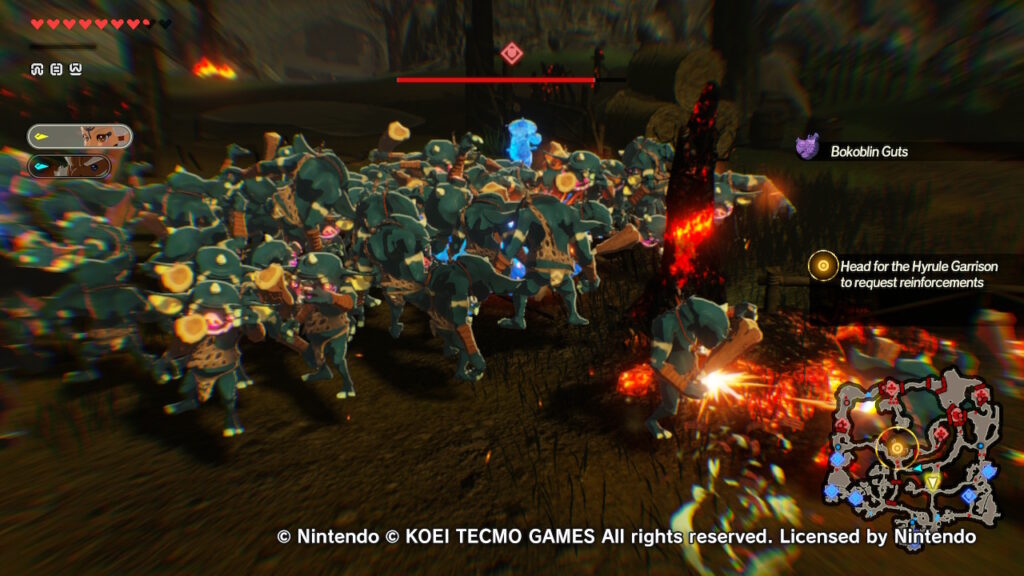
This is the closest there has ever been a Zelda anime. The high production values during cutscenes make the narrative very easy to follow, and enjoyable to watch. The signature cel shaded style of Breath of the Wild has been preserved faithfully, and works wonders for a scene’s lighting.
The shader effect highlights definition and volume. Every character’s color pallet is easily identifiable, and guarantees there are no mistakes when picking them out during huge battles with hundreds of enemies on screen at once.
As good as the cutscenes look, the same cannot be said for the environments during gameplay. The stages do their best at recreating the setting of Breath of the Wild, but the workload in Age of Calamity is just too much to fully realize Hyrule and the huge armies clashing at the same time.

The draw distance is very low. Foliage instantly appears after only a couple of yards of running in any direction. When playing docked, the low quality of the assets will become very noticeable, and the simplistic geometry looks like a generation behind.
This was all a concession for the game to feature dozens upon dozens of fodder enemies on screen. It can often look like peering into an ocean of Bokoblins swarming and covering the terrain, making the floor look like its moving. It does make an impression and never got old, but it is mostly for show.
The anarchy of rioting enemies is a smokescreen to make the combat more exciting than it really is. Most of the time these basic grunts don’t bother attacking, and players can easily run past most of them. The game will sometimes arbitrarily force the heroes to clear a certain amount of them in order to capture a base, but these enormous mobs are never a threat.

This reliance on stupid and weak mobs of enemies is standard for the Musou formula. The problem with Age of Calamity is how it has come at the cost of stability. This game barely runs at 30 frames per second, and can drop to single digits when performing gigantic attacks against large clusters of mooks.
Sometimes it can be satisfying to make the game buckle under the weight of the power of the heroes. It is as if the Nintendo Switch console itself can’t handle the explosive awesome power of the Master Sword. Most of the time its a nuisance that gets in the way of being able to perform perfect dodges to do a flurry rush.
When the game runs so poorly, the gameplay feels compromised. Age of Calamity is a very button mashy kind of action game, and when it’s dropping frames there is a disconnect with the actions performed on screen. The controls won’t feel responsive because certain frames get lost, resulting in some attacks not being performed.

Like all Musou games, Age of Calamity has every character with basic attacks that string into a combo, which can also be lead ins to strong attacks. It is a very easy to understand combo system that makes controlling each of the characters feel consistent, with some minor exceptions. Despite this universal input system, each hero has vastly different moves and mechanics.
It is not technical like Devil May Cry V, but it gets the job done at creating a lot of variety with a large cast of playable characters. Certain heroes have some experimental mechanics in them that make them unlike anything used in a 3D action game before.
Impa is able to multiply herself, becoming a literal one-woman-army. Each attack from her copies also feeds into her special bar, making her one of the most powerful characters as she can perform her super move faster than anyone else. These powerful attacks play out a mini cutscene which grinds the action to a halt, which is especially tedious in Impa’s case.

The nigh endless battling with armies of monsters in the story mode becomes exhausting. The gameplay rarely deviates from Link and the gang having to follow the map marker and fight some more. Even the submissions are just small scaled challenge battles that are sometimes timed.
After a while your eyes glaze over as your kill count surges in the thousands, as Link performs the same devastating attack combo to hordes of enemies. The load times between the short sub missions exacerbate the tedium, lulling the player into a comatose state and functioning purely on auto pilot.
Powering up the heroes is done my spending the countless items acquired on the battlefield. These collectables are modeled after the resources found in Breath of the Wild, and are functionally the same as the items in the first Hyrule Warriors. Age of Calamity cleverly dresses up the same upgrade system with ubiquitous map layout from Breath of the Wild.
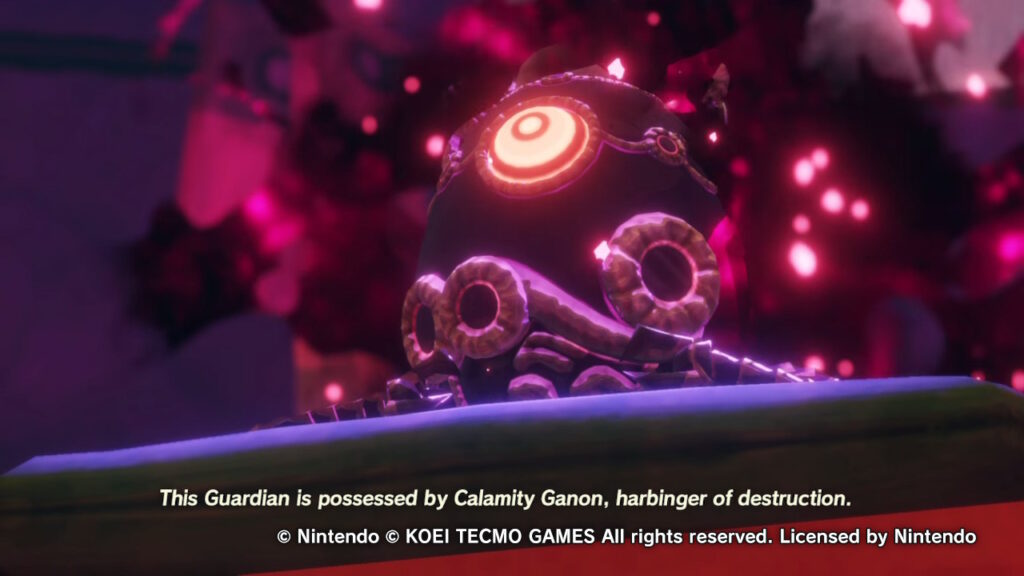
The map screen gradually opens up various nodes that require certain resources. The further into the story, the more of these resources become available. Aside from a few lines of flavor text, you just have to take the game’s word that the gang is helping the people of Hyrule by spending items that expand Mipha’s combo.
The weapon upgrading does not require much thought, just lots of Rupees. Every so often, when a character has a lot of spare weapons lying around, combining them all is all it takes to make more powerful gear. There isn’t any armor to worry about, and all of Link’s outfits are purely cosmetic.
It may not look like much, but it is efficient and is less abstract than whatever the last system was supposed to represent. All shops and towns are just a few symbols on a map screen, so do not expect Age of Calamity to represent any open-world aspects from Breath of the Wild. This is still a traditional Musou game, but with less babysitting Generals and no timer during main missions.

The biggest disappoint in Age of Calamity is the implementation of the Divine Beasts. These are glorified shooting gallery stages where control is very sluggish, and the targets are almost microscopic. It looks impressive in some angles, but ultimately is shallow and frustratingly become necessary for certain upgrade paths to open.
Hyrule Warriors: Age of Calamity is like most Musou games; enjoyable in small doses. It has a lengthy post game grind and a lot of characters to play as; all of whom have unique gameplay mechanics tied to their R-trigger. Like the first Hyrule Warriors, the Zelda branding helped it stand out from being generic. This is doubly so with Age of Calamity, and its effort put into crafting a war epic in the Breath of the Wild universe.
If you have a tolerance for spotty frame rates, patience for load times, and enjoy being an army of one against a horde of idiotic mooks; then Age of Calamity is for you. This is a guilty please that comes at a steep price, but it also serves as a potential appetizer of things to come in the Breath of the Wild sequel.
Hyrule Warriors: Age of Calamity was reviewed on Nintendo Switch using a personal copy. You can find additional information about Niche Gamer’s review/ethics policy here.